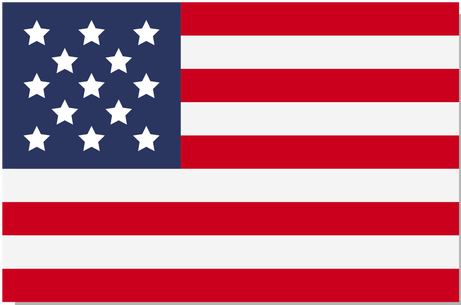Blue Diamonds: Rarity, Science, and the Royal Lure
September 25, 2025
5 min read
By Marina Acton
Few gemstones carry the quiet, magnetic authority of a blue diamond. At once geological anomaly and cultural totem, these stones occupy the rarefied intersection of deep-Earth science and dynastic pageantry. This feature unpacks what makes blue diamonds scientifically singular, why they remain among the rarest of gem materials, and how a handful have come to define royal taste and legend.
The science beneath the blue
Unlike sapphires—which owe their color to chromium and iron—blue diamonds get their hue from atomic impurities inside pure carbon lattices. The dominant cause in the most intensely blue, naturally colored diamonds is boron: trace quantities of boron atoms substitute into the diamond’s crystal structure and change how the stone absorbs light, producing blue transmission windows that our eyes perceive as blue. Gemologists classify many of these as Type IIb diamonds, a chemical grouping that is electrically conductive (another unusual property for diamond) because of that boron content.
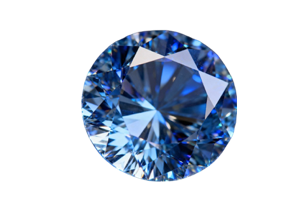
Recent geochemical work has deepened the mystery — and the romance — of blue-diamond origins. Isotopic and mineral-inclusion evidence indicates that many natural blue diamonds formed far deeper in Earth’s mantle than most gem diamonds: some originate from the lower mantle at depths of 400 km (≈250 miles) or more, carried to the surface by violent kimberlite eruptions tied to subducted oceanic plates. In short: blue diamonds are not only chemically rare, they are born in geological niches uncommon in the planet’s architecture. Other mechanisms can produce blue tones as well—natural irradiation, hydrogen-related defects, and in rare cases, treatments or synthetic growth methods may mimic or modify a blue appearance—but gem labs (notably GIA) distinguish natural Type IIb boron-colored stones from irradiation-colored or laboratory-enhanced material using spectroscopy and inclusion analysis.
Why blue diamonds are so rare (and valuable) Several converging reasons explain scarcity:
Scarcity of boron where diamonds form. Boron must be present in the tiny window of chemical environments in which diamond carbon lattices grow; even then the boron concentration that produces a saturated blue hue is measured in parts per million or less. Deep-mantle origin. Diamonds formed at the extreme depths associated with many blue stones require particular tectonic histories (deep subduction followed by rapid ascent), conditions that are uncommon in Earth’s recent geological record. Limited geographic sources. Historically important sources include India’s Golconda region (ancient source of the great Golconda blues), South Africa (notably the Cullinan and Premier/De Beers-area kimberlites), and Australia’s Argyle district (which produced a few hydrogen-influenced blue-gray stones). Because supply is concentrated in a few deposits, discoveries are episodic and unpredictable.
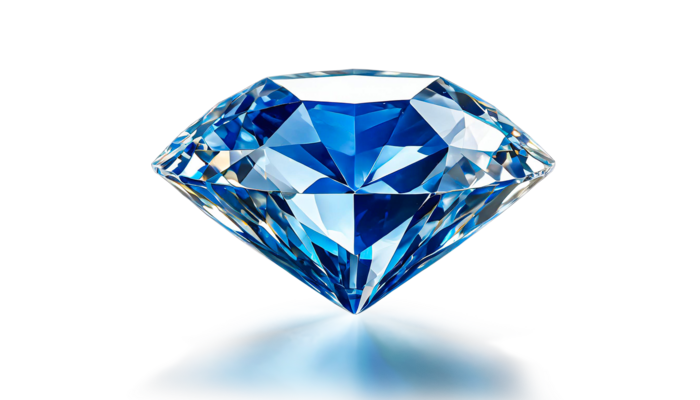
Gemological grading and market appetite. Blue diamonds are judged primarily on hue, saturation and tone (the “fancy” color scale rather than the D–Z white scale). The very deepest, purest blues—Fancy Vivid or Fancy Deep Blue—are exceptionally scarce, and collectors prize them accordingly. Taken together, those factors mean blue diamonds appear at a vanishing rate in production. They’re among the most expensive per carat of any colored diamond, and provenance—natural vs. treated, mine origin, and whether a stone is historical—can add huge premium value.
Royalty, stories, and the blue diamond mystique
Blue diamonds have long been associated with monarchs, magnates, and myth. Two of the most celebrated examples illustrate both scientific intrigue and royal drama. The Hope Diamond. Perhaps the best-known blue gem on Earth, the Hope Diamond (45.52 carats today) traces its recorded history to the 17th-century Golconda mines of India. Brought to Europe by the gem merchant Jean-Baptiste Tavernier, it entered the French crown jewels and later emerged in private hands before a notorious modern provenance that ended with the Smithsonian Institution, where it is now on public display. The Hope’s size, deep blue color and storied chain of owners—plus folkloric curses—have made it the archetypal royal blue diamond. Scientifically, the Hope is classified among natural blue diamonds that contain boron and exhibit the expected spectroscopic signatures of Type IIb material.
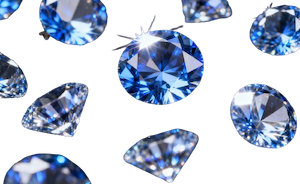
The Wittelsbach–Graff (Wittelsbach) Diamond. Another royal blue with an imperial past, the Wittelsbach originated in India and was associated with the Habsburg and Bavarian dynasties for centuries. In the 21st century the stone was purchased and controversially recut by Laurence Graff (renamed Wittelsbach-Graff), which improved clarity and color at the cost of several carats and some historical patina. Its journey from crown to private collection underscores how blue diamonds straddle the worlds of heritage and high-end art dealing. Beyond these headline gems, other famous blue stones—Tereschenko, the Heart of Eternity (a De Beers display stone), and numerous historic Golconda-era jewels—have ornamented royal diadems, orders and necklaces. The royal provenance confers cultural capital that often exceeds the intrinsic per-carat value, turning significant blue diamonds into symbols of dynasty, statecraft, and conspicuous taste.
Science meets the jeweler’s art
Cutting and setting affect how a blue diamond reads to the eye. Because the blue hue is a function of absorption bands within the stone, cutters work to maximize color saturation and evenness while preserving weight—an aesthetic and commercial balancing act.
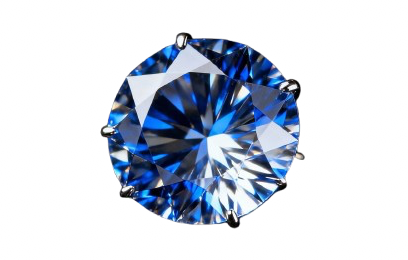
Laboratory analysis (FTIR, UV-Vis, PL spectroscopy) is routine for fine blue diamonds to report origin of color, the presence of boron, any treatment history, and whether a stone is natural or grown. Established gemological labs now provide the provenance data collectors demand before placing seven-figure bids at auction.
Conservation, ethics, and modern supply
Blue diamonds are so scarce that single mine strikes (for example, rare blue finds at Cullinan) can dominate headlines and briefly alter market dynamics. Increasingly, buyers ask not only about color origin but about responsible sourcing, chain-of-custody, and whether a stone’s mine-of-origin can be confidently reported. The modern blue-diamond market thus sits at the confluence of deep-time geology, high-technology analysis, and the ethics of luxury trade.
Final note — why the blue retains its hold
The blue diamond’s appeal is both literal and symbolic: the color is literally rare in the carbon lattice, and culturally it reads as regal, oceanic, and otherworldly. Whether under the crown of a 17th-century monarch or the glass of a modern museum, blue diamonds remind us that something crafted by exotic planetary processes can come to stand for power, beauty, and the human desire to possess Earth’s rarities.
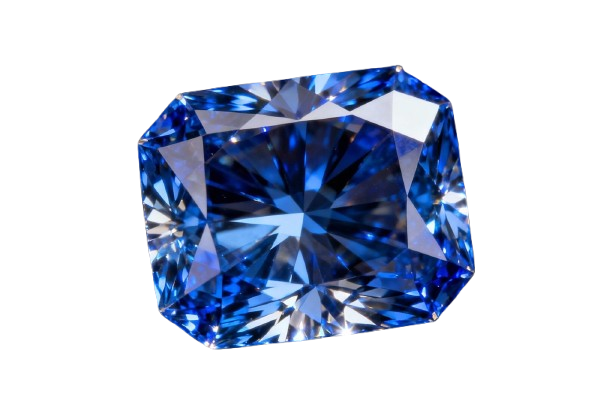
 Recent geochemical work has deepened the mystery — and the romance — of blue-diamond origins. Isotopic and mineral-inclusion evidence indicates that many natural blue diamonds formed far deeper in Earth’s mantle than most gem diamonds: some originate from the lower mantle at depths of 400 km (≈250 miles) or more, carried to the surface by violent kimberlite eruptions tied to subducted oceanic plates. In short: blue diamonds are not only chemically rare, they are born in geological niches uncommon in the planet’s architecture. Other mechanisms can produce blue tones as well—natural irradiation, hydrogen-related defects, and in rare cases, treatments or synthetic growth methods may mimic or modify a blue appearance—but gem labs (notably GIA) distinguish natural Type IIb boron-colored stones from irradiation-colored or laboratory-enhanced material using spectroscopy and inclusion analysis.
Recent geochemical work has deepened the mystery — and the romance — of blue-diamond origins. Isotopic and mineral-inclusion evidence indicates that many natural blue diamonds formed far deeper in Earth’s mantle than most gem diamonds: some originate from the lower mantle at depths of 400 km (≈250 miles) or more, carried to the surface by violent kimberlite eruptions tied to subducted oceanic plates. In short: blue diamonds are not only chemically rare, they are born in geological niches uncommon in the planet’s architecture. Other mechanisms can produce blue tones as well—natural irradiation, hydrogen-related defects, and in rare cases, treatments or synthetic growth methods may mimic or modify a blue appearance—but gem labs (notably GIA) distinguish natural Type IIb boron-colored stones from irradiation-colored or laboratory-enhanced material using spectroscopy and inclusion analysis.
 Gemological grading and market appetite. Blue diamonds are judged primarily on hue, saturation and tone (the “fancy” color scale rather than the D–Z white scale). The very deepest, purest blues—Fancy Vivid or Fancy Deep Blue—are exceptionally scarce, and collectors prize them accordingly. Taken together, those factors mean blue diamonds appear at a vanishing rate in production. They’re among the most expensive per carat of any colored diamond, and provenance—natural vs. treated, mine origin, and whether a stone is historical—can add huge premium value.
Gemological grading and market appetite. Blue diamonds are judged primarily on hue, saturation and tone (the “fancy” color scale rather than the D–Z white scale). The very deepest, purest blues—Fancy Vivid or Fancy Deep Blue—are exceptionally scarce, and collectors prize them accordingly. Taken together, those factors mean blue diamonds appear at a vanishing rate in production. They’re among the most expensive per carat of any colored diamond, and provenance—natural vs. treated, mine origin, and whether a stone is historical—can add huge premium value.
 The Wittelsbach–Graff (Wittelsbach) Diamond. Another royal blue with an imperial past, the Wittelsbach originated in India and was associated with the Habsburg and Bavarian dynasties for centuries. In the 21st century the stone was purchased and controversially recut by Laurence Graff (renamed Wittelsbach-Graff), which improved clarity and color at the cost of several carats and some historical patina. Its journey from crown to private collection underscores how blue diamonds straddle the worlds of heritage and high-end art dealing. Beyond these headline gems, other famous blue stones—Tereschenko, the Heart of Eternity (a De Beers display stone), and numerous historic Golconda-era jewels—have ornamented royal diadems, orders and necklaces. The royal provenance confers cultural capital that often exceeds the intrinsic per-carat value, turning significant blue diamonds into symbols of dynasty, statecraft, and conspicuous taste.
The Wittelsbach–Graff (Wittelsbach) Diamond. Another royal blue with an imperial past, the Wittelsbach originated in India and was associated with the Habsburg and Bavarian dynasties for centuries. In the 21st century the stone was purchased and controversially recut by Laurence Graff (renamed Wittelsbach-Graff), which improved clarity and color at the cost of several carats and some historical patina. Its journey from crown to private collection underscores how blue diamonds straddle the worlds of heritage and high-end art dealing. Beyond these headline gems, other famous blue stones—Tereschenko, the Heart of Eternity (a De Beers display stone), and numerous historic Golconda-era jewels—have ornamented royal diadems, orders and necklaces. The royal provenance confers cultural capital that often exceeds the intrinsic per-carat value, turning significant blue diamonds into symbols of dynasty, statecraft, and conspicuous taste.
 Laboratory analysis (FTIR, UV-Vis, PL spectroscopy) is routine for fine blue diamonds to report origin of color, the presence of boron, any treatment history, and whether a stone is natural or grown. Established gemological labs now provide the provenance data collectors demand before placing seven-figure bids at auction.
Laboratory analysis (FTIR, UV-Vis, PL spectroscopy) is routine for fine blue diamonds to report origin of color, the presence of boron, any treatment history, and whether a stone is natural or grown. Established gemological labs now provide the provenance data collectors demand before placing seven-figure bids at auction.

